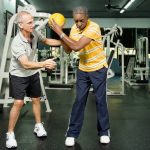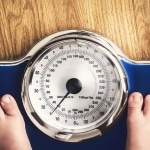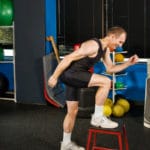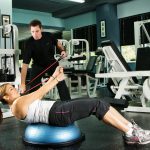May 2021
Revisiting Sitting: Does Your Cardio Fitness Protect You?
Sedentary living defines modern mankind. We have reviewed some of these effects here, here, here and here. And we now know that too much sitting kills by contributing to peripheral artery disease by impairing endothelial function (EF), that is, how our blood vessels respond to changes in activity. When you sit for long hours, blood flow slows and viscosity thickens…and fatty deposits form that may, down the road, cause clots to dislodge.
We also know that regular endurance training improves EF via increased nitric oxide (NO) availability which expands blood vessels. Japanese researchers wanted to know if the transient EF dysfunction from sitting is mitigated endurance training.
Nine untrained college-age males and 10 collegiate cyclists sat still for 3 hours after having non-invasive vascular measurements of the popliteal artery behind the knee taken. Venous diameter and blood velocity, plus blood pressure were measured hourly and again at the end of the test period.
Surprise, surprise: the non-athletes demonstrated impaired EF but the endurance athletes did not.
Despite both groups having some reduction in microvascular blood flow and shear rate (an otherwise favorable process), the % reduction in the athletes did not meet the standard of impaired macrovascular function.
Sadly, though, this was not the case from other studies that used lesser trained athletes. The ones in this study were pretty elite (60.8 ml/min/Kg max VO2) competitive jocks compared to another study which had recreational athletes averaging 50 ml/min/Kg VO2 max.
The take home message is, don’t sit still too long unless you’re in great cardio shape!
MSSE Aug. 2020
Daily Step Count Affects Post-Meal Fat Metabolism
While we’re on sitting around as we endure another snow-packed lockdown, let’s add one more anti-health effect from it: reduced post-meal plasma triglyceride response to a high-fat meal. Studies show that the exercise you do today improves that response and also increases fat oxidation the day after exercise. Two University of Texas – Austin researchers wanted to home in on how many daily steps were necessary to derive these benefits.
They had 10 recreationally-active young adults do three trials of eating a high-fat meal after a prescribed step-count the day before. The counts were 2500, 5000 and 8500 steps/day and on the day of the meal did a 1-hour run. Then they were tested on how well they oxidized carbs and fats as well as overall calories.
The subjects stuck pretty close to the prescribed number of steps. The LOW did, on average, 2675 while the LIMITED did 4759. Compared to the NORMAL group, who took 8431 steps, their whole- body fat oxidation and plasma triglyceride responses were “significantly impaired.” The LOW and LIMITED had a 14%-19% reduction in fat oxidation with a 22%-23% increase in triglycerides (not favorable results), respectively, compared to the HIGH step counts.
These deficiencies demonstrate that, despite the 1-hr run the same day, taking too few daily steps impairs metabolic function. The relatively-new concept of “exercise resistance” suggests that excessive sedentariness may not allow normal metabolism even in the face of an exercise bout. So, move more, daily!
MSSE Feb. 2021
Tid Bits
A 24-week study comparing yin yoga and a circuit resistance training + functional impact exercises (RT) on breast cancer survivors found that both improved lower body strength but neither reduced body fat or increased bone mineral density, as desired. RT improved upper body strength and was well tolerated by participants but the authors suspect that the group format was not challenging enough to build bone and lose fat. MSSE Jan. 2021
We’re down to 12 minute vigorous workouts to yield heart health benefits. In the 70s and 80s, it was 30-60 minutes. In the 90s and aughts, when high intensity exercise made its name, we went to 20-30 minutes. Now a study of 411 middle age adults in the Framingham Heart Study found that a mere 12 minutes of hard exercise produced favorable changes in 80% of the 588 metabolites linked to metabolic and heart health. It lowered those associated with insulin resistance (a precursor to diabetes), lipolysis (breakdown of fats), inflammation and blood vessel integrity. Harvard Health Letter Feb 2021
Shoulder pain is a real challenge. A European study hypothesized that, since subacromial pain syndrome (where soft tissue is compressed between two bones) is characterized by reduced blood flow and therefore reduced oxygenation of the muscles and tendons, an exercise routine that focuses on high levels of endurance might help. They had 2 groups of patients do either HIIT or usual therapy for 8 weeks. The HIIT group did supraspinatus and scapular stability exercises to exhaustion – 3 sets of 4 min. intervals with 3 min. rest periods! Not only did their rotator cuff muscles improve endurance by 136%, but also their max work rate increased by 167% vs 26% for the controls. Tendon blood flow rates were similar between groups but vascularity improved more in the HIIT group than the controls. MSSE Jan. 2021

















